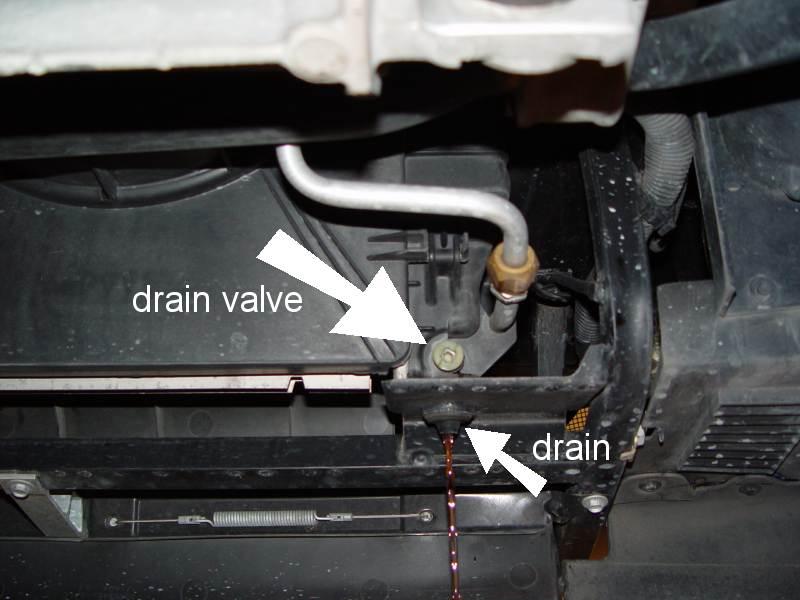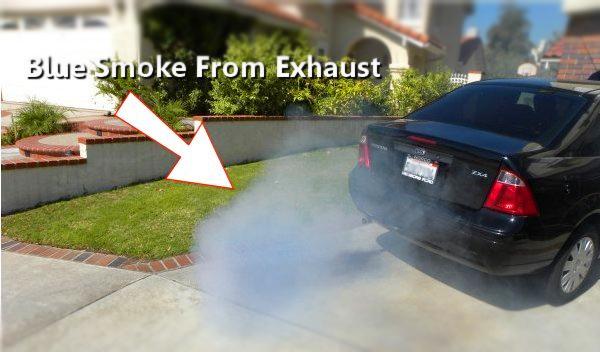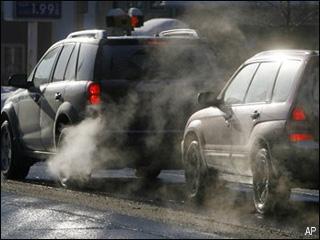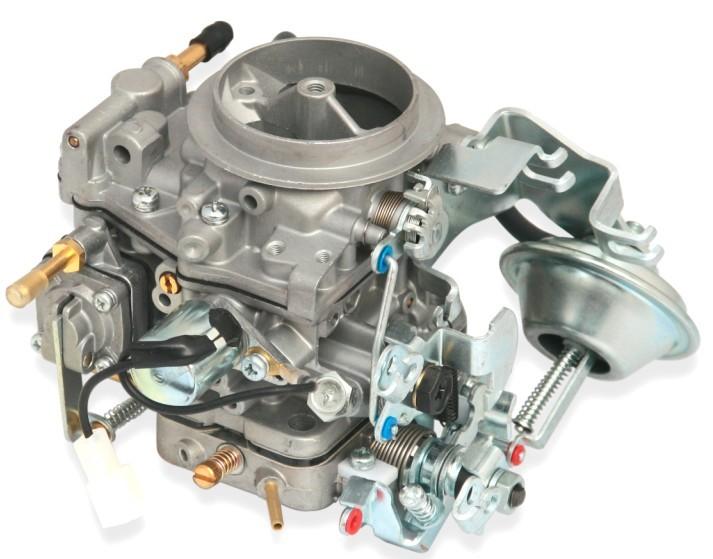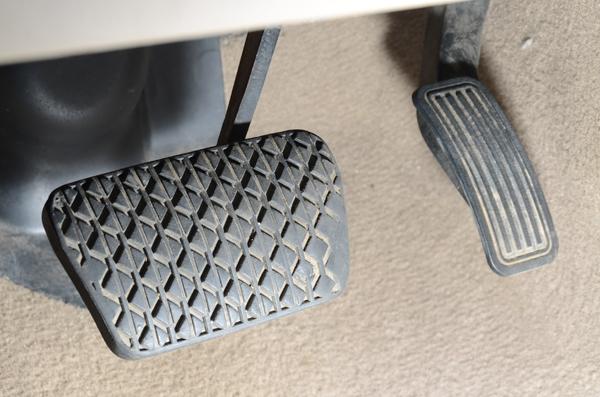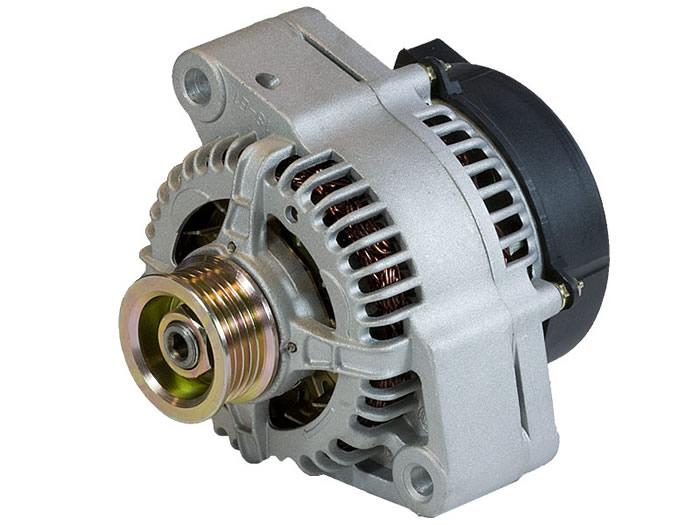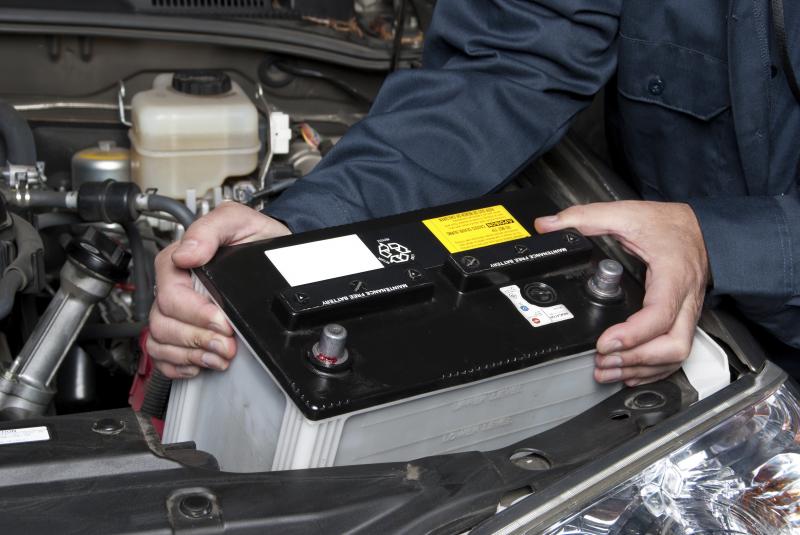-
Posts
644 -
Joined
-
Last visited
-
Days Won
20 -
Country
United Arab Emirates -
Carnity Points
87 [ Donate ]
Content Type
Profiles
Forums
Advice
Business Listing
Car Deals
Recall
OBD II Car Diagnostics
Guest lead capture
STORE
Events
Gallery
Blogs
Everything posted by Carnity
-
Paint restoration for one panel of your car Deep scratch paint work to remove scratches by cleaning it with a chemical called Premium X. For polishing, Meguiar products are used Minor dent removal Body wash, tyre polishing and interior vacuuming 6 level paint process: - Scratch re-fill - Primer work - Painting - Clear coat - Polishing - Waxing
-
Carnity is proud to support Gulf Car Festival 2016 happening at Bay Avenue, Business Bay, Dubai on 14-16 April 2016. Be there and meet many more car enthusiast's under one arena showing their awesome hand picked show rides.
-
You can find the "Popular Contributors" on every topic right side-block, showing the members having more reputation as per weekly, monthly, yearly and all time view. This block shows the latest reputation as per every 5 minute. Reputation numbers = number of members liked your content.
- 9 replies
-
- make money
- carnity red like
-
(and 1 more)
Tagged with:
-
“No lucky draws, No first come first serve, No conditions apply”After 5 years of success, it’s time to take Carnity to the next level, by sharing its success to the backbone of Carnity: Members, oops, Participating Members.With immediate effect: Every Carnity participating member can make money with Carnity by contributing with their car knowledge or experience in the one and only GCC Car Community in the world.All you have to do is to write a meaningful, helpful and unique piece of content of any reasonable size and post it in any Carnity Forum or in the Advice Section and wait for other Carnity members to “Red Like” it, which is placed at the bottom right corner of every post and article. That’s it. There is no upper limit for the number of quality content that you can contribute on Carnity, of course, following our below guidelines and you will have unlimited Carnity "Red Likes" for each piece of content within the first month of your posting. All Carnity “Red Likes” will be paid at the end of each calendar month through PayPal or any UAE local bank. Content Guideline: It should pass copyscape test for being plagiarism free to be unique.It should be relevant, meaningful and helpful to other car enthusiasts.It should be originally written by you based on your knowledge or experience.DO’s: You can share your content on any social media to get more Carnity ”Red Like”.You can share your content with your friends / family to get more Carnity ”Red Like”.You can encourage readers to “Red Like” your content at the end of your post / advice.DON’T’s: Don’t “Red Likes” any meaningless, irrelevant content to help others.Don’t engage into “Red Like” exchange with other Carnity member’s.Don’t create multiple users; we log every session and IP addresses activity.
- 9 replies
-
- 4
-

-
- make money
- carnity red like
-
(and 1 more)
Tagged with:
-
Carnity Forum Guideline Why we need to grow Carnity and why it's free?How to use Carnity for free? What is Car Enthusiast's Community? A Car Enthusiast's Community is a group of like minded car enthusiast's, who like to discuss and help each other with their knowledge and experiences. Not everything has "Yes" and "No" in car owning experience and in those doubtful moments, when you need an unbiased free second opinion you seek advise from Car Community members and experts. All advice and solutions here are non obligatory and absolutely free as they are based on community efforts of helping each other. If you help people today with your knowledge and advice then same people will help you tomorrow when you need their expert advice or a second opinion. So it's time to make new car friends', gain positive reputation and above all being helpful and tolerant to others.
-

NUREMBERG AUTO SPARE PARTS L.L.C
Carnity commented on Marjoe's business listing in Spare Parts / Accessories
one of the best websites ive seen in a long time user friendly as well and beautiful to look at for sure 3.5 out of 5- 1 comment
-
- aston martin
- bentley
-
(and 4 more)
Tagged with:
-
If you are looking for a new car then for sure you must have landed in the classic confusion to understand which one is better for your need AWD vs 4WD. In today's world, most of the modern world SUV comes in either AWD or 4WD option. The basic difference is that an AWD or All-Wheel Drive is a recent innovation which drives all of the four wheels, all the time whereas 4WD or Four-Wheel Drive is used for large SUVs (Sports Utility Vehicle) to use extra traction in off-road situations. The easiest way to tell them apart is that AWD system are always on and utilizing electronic sensors, it is smart enough to know which wheel needs power. 4WD is usually disconnected and needs effort from the driver to be engaged, turning all four wheels at the same time. Here are the main differentiators: AWD is always on and it comes quite handy during unexpected situations, especially when negotiating sandy patches or slippery corners. AWD definitely make more sense for Dubai or UAE roads where sand and little off road patches is in abundance. AWD is always engaged and the traction required is readily managed by sensors automatically and the driver does not need to make any selection of terrain or gear.4WD are mainly useful for truck-based vehicles with large wheels and off-road tyres thus proving advantageous to negotiate very difficult terrain. It comes with two versions: either full-time - they stay automatically engaged allowing the car to switch between two and four-wheel-drive mode; or part-time - the driver has to manually shift between two and four-wheel drive. In most AWD systems, power is delivered to one set of wheels, front or rear. On detection of any slippage at one axle, power is diverted to the other axle automatically. In 4WD, the gears split the power between the front and rear axles so that the maximum torque goes to each wheel. When the transfer case splits power evenly, it ensures that each wheel turns at the same speed. There is also a ‘high’ and a ‘low’ 4WD. In the ‘high’ mode, power splits less evenly and is recommended for speed up to 95 kmph. In low mode power splits more evenly and is recommended for tackling serious off road conditions i.e stuck in loose sand, pulling another car or towing the trailer. In low gear speed should not be increased more than 30 – 40 kmph or else it will stress the gearbox and drive-train noticeably. AWD provides better grip and offer sportier handling and traction to a wide range of sports car, performance SUV and crossover’s. But it reduces fuel economy, as it increases weight and is not ideal for extreme off-road conditions.For extreme off-road conditions, 4WD comes across as sturdy. It can be turned off to improve fuel economy but it adds weight as well. And needless to say It is expensive than the two wheel drive models.While AWD offer excellent benefits if the weather gets rough, or the road is not as it is meant to be, hence the All-Wheel Drive is still the best choice to use in Dubai and UAE conditions. In conclusion, if you are a die-hard fan of 4-wheel-drive for extreme off-road adventure, opt for a 4WD, if not then AWD makes lot more sense. If you need more help, or need specific answer for any question then try the ‘Carnity Forum’ (http://carnity.com/) section or find car businesses near you with the Carnity ‘Business listing’ (http://carnity.com/business_listing) section.
-
- awd vs 4wd
- car buying
-
(and 2 more)
Tagged with:
-
Ford Dubai Al Tayer Motors was established in 1982 and sole distributor for Ford cars and trucks in Dubai and northern emirates. Dedicated service, sales and parts centers in addition to world class personnel provide each customer with a unique ownership experience.
-
- ford
- ford dubai
-
(and 2 more)
Tagged with:
-
Chevrolet Dubai Al Ghandi Auto is the largest volume selling Chevrolet dealer in the United Arab Emirates and winner of the prestigious Dubai Quality Appreciation Award. Al Ghandi Auto has been the Chevrolet dealer in Dubai and the Northern Emirates since 2008 and stock the most demanded vehicles available, which saves time, money, and from having to browse other dealers.
-
- chevrolet
- chevrolet dubai
-
(and 2 more)
Tagged with:
-
Cadillac Dubai Liberty Automobiles is one of the largest GM dealerships in the UAE and sole distributors for Cadillac cars in Dubai. Liberty Automobiles Co. was established in 1976, as an authorized General Motors dealer for Cadillac, Chevrolet and AC Delco.
-
- cadillac
- cadillac dubai
-
(and 2 more)
Tagged with:
-
BMW Dubai AGMC is the only BMW new car dealer in Dubai and northern emirates. Conveniently located showroom and service center across Dubai, make BMW experience more closer to the proud owners and BMW enthusiast's.
-
Audi Dubai Al Nabooda Automobiles LLC is the sole importer of Audi in Dubai and the Northern Emirates. Dubai’s showroom is the worlds largest Audi new-car showroom which is conveniently located right off Sheikh Zayed Road (Exit 46) in the Al Quoz area.
-
- audi
- audi dubai
-
(and 2 more)
Tagged with:
-
Your car engine coolant is the most important fluid to keep the engine cool to perform as designed. With age your car engine coolant need a replacement after 20,000 – 30,000 kms or after 2 years. You can test your coolant for remaining life and if require get it changed. For replacing it you need to drain the old coolant and then replace with recommended coolant as per your car’s owner manual. Follow below procedure to drain the old engine coolant: Car should be cold at least for 6-12 hours.Raise the front of the car and support with jack stand.Place a large drain pan under the radiator. Use pliers to loosen the lower radiator hose clamp and remove the hose. Allow the radiator and water pump to drain completely and later, reattach the lower radiator hose and clamp. Refer to your repair manual, locate and remove the radiator drain plug. Now open the radiator pressure cap on top and fill the radiator with water. Keep the heater control on high and start the engine for about ten minutes. Do not overheat. Allow it to cool and once the temperature is ideal enough for you to touch, drain the water out of the system into the drain pan.Close the drain plug and refill the system with water and coolant.Another efficient approach is the true flushing/back-flushing method. This method needs two access points and uses a pump to force new fluid through the cooling system, which forces the removal of the old coolant. This method allows for a forward flush or back-flush, depending on the method of vehicle connection used.Useful tips: There are several products available for cleaning the cooling system during the flushing process. These products remove rust and sediment that flushing with plain water may not be able to. Used coolant is a toxic waste. Dispose it responsibly to save the environment.Read the manufacturer’s warnings and buy coolant from the right dealer and with correct specification. When refilling, follow the coolant manufacturer's directions on diluting concentrated coolant. Mix the coolant and distilled water in right proportion and never use the tap water. Leave the car raised while you refill the radiator to reduce the possibility of air pockets forming in the engine.If you need more help, or need specific answer for any question then try the ‘Carnity Forum’ (http://carnity.com/) section or find car businesses near you with the Carnity ‘Business listing’ (http://carnity.com/business_listing) section.
-
While blue color could symbolize trust and wisdom, but with a car it could well symbolize the American concept of depression associated with the blue color. So, if blue smoke comes out of your car’s exhaust, it is a clear sign of worry -- Oil is burning, which means it is coming out of its supposed domain and leaking and getting burnt along with fuel to result in blue vapors. This could be because the piston rings or valve guise seals have got damaged. The leak may let the oil reach the combustion chamber, where it gets burnt. Another reason could be that the car is turbocharged and the smoke is a signal that the blower’s time is up. The blue smoke should not be confused with white smoke you see when you start your car. White smoke is water vapor collected while the car was parked. To find the damage, you could first check the valve seals. The valves are covered in oil on top and the seals are designed to stop this oil from getting into the engine. Once worn out, the valve seals will be helpless and let’s oil get into the engine which gets burnt along with the fuel and air creating the blue smoke. If the valve seals are fine, check Positive Crankcase Ventilation (PCV) valve. The job of this valve is to release the pressure that gets built in the oil pan into the intake manifold which is connected to the engine air filter. If the PCV valve is damaged, it will mix the air with oil and other gases in the engine, which gets burnt resulting in the blue smoke as well. If valve seals and PCV valve are fine, then the damage could be in the engine. The engine pistons have metal rings around them called Piston rings. When the pistons move up and down and if the rings are worn out, oil from beneath the piston can come up, which gets mixed with air and fuel mixture and getting burnt inside the combustion chamber and leaving the exhaust valve with blue smoke indicating that engine oil is getting burnt in the combustion chamber. The one and only solution for leaking piston rings is to open the full engine and rebuild the most of component including new piston rings, valve seals, gaskets etc. It’s a lengthy and expensive process so considering this overhauling engine vs replacing with another used engine is a very considerable thought. If you need more help, or need specific answer for any question then try the ‘Carnity Forum’ (http://carnity.com/) section or find car businesses near you with the Carnity ‘Business listing’ (http://carnity.com/business_listing) section.
-
Carbon Monoxide (CO), Hydrocrabons (HC), Nitrogen Oxide (NOX), particulate matter (PM), volatile organic compounds (VOCs) and smaller amounts of other pollutants such as sulphur dioxide (SO2) and ammonia (NH3) are dangerous emissions produced by the exhaust in cars. The result is global warming which is responsible for high temperatures, rising seas, and severe flooding and droughts. Carbon monoxide (CO) is a poisonous gas while VOCs are a major component of smog produced from unburned fuel. NOX is a contributor to smog and acid rain. Fuel-efficient vehicles are the need of the hour and with the kind of fuel being used, the emission also differs. Some fuels, like those made from cellulosic biofuels, reduce emissions compared to gasoline. Electric cars produce fewer emissions. There is an ongoing debate on whether diesel is cleaner than petrol but there is no consensus as yet. Diesel cars were thought to be cleaner, but studies have found that they have completely different emission characteristics, and an increase in such cars could have its own implications on urban air quality. Incorporating catalytic converters in cars using petrol, which oxidize pollutants, especially CO to less harmful gases such as CO2, has come up as a solution, but at the cost of more fuel usage and lesser efficiency. But still, the emissions are more than that of diesel cars. Thankfully, because of the hot weather in GCC, emissions from cars are lesser than in the colder countries, since a car in a cold climate could take up to 5-10 km to warm up and colder engine produce more emissions than at idle temperature. A method of pollution reduction currently being utilized involves the use of cleaner petrol and diesel and carefully controlling the amount of fuel they burn. And then there are alternative fuels. Compressed natural gas (CNG), Liquefied Petroleum gas (LPG), city diesel, hydrogen, alcohol fuels, hybrids, plug-in hybrids, and battery operated vehicles are being developed and in various stages of competing with the efficiency provided by petrol or a diesel car, while dramatically reducing the harmful emissions. If you need more help, or need specific answer for any question then try the ‘Carnity Forum’ (http://carnity.com/) section or find car businesses near you with the Carnity ‘Business listing’ (http://carnity.com/business_listing) section.
-
A carburetor’s main role in the car is to use intake vacuum and supply fuel to the engine. And to fulfill its job, it relies on many add-on devices. So, if your mechanic says that there is a problem with the carburetor, there are several other devices which also need to be looked at before deciding that the carburetor needs a replacement or repair. When, clean and working properly, the carburetor allows the engine to start easily, idle evenly, and accelerate smoothly. Problems caused by the carburetor include hard starting, rough idle or idling too fast, poor fuel economy, etc. It is often difficult to rebuild a carburetor and expensive to replace, so it is better to check on all other add-ons. Check the choke. Sometimes a small adjustment or cleaning the choke mechanism can solve the problem. A broken choke will also prevent the engine from idling properly. A choke repair kit or a new bimetal spring is all that would be required if the fault lies with choke. If there is too much heat near the carburetor, then you will experience hot starting problems. All you have to do in such a case is to reroute the fuel line away from sources of heat. You can also insulate the fuel line by wrapping it with insulation. Hot start problems can also be because of excessive resistance in a starter, poor battery cable connections, or a faulty ignition module .When there is too much of air and not enough fuel, the result is hesitation. It can be caused by a dirty or misadjusted carburetor, or because of a poor accelerator pump. You could also have a worn out throttle shaft. In such cases, replacing the carburetor may be required. Air leaks in the engine can also cause hesitation, resulting from loose vacuum hoses, emission hose or the PCV system. A defective EGR valve can be another cause of hesitation. A defective distributor advance mechanism, a weak ignition coil, bad plug wires, worn off spark plugs could be other causes which needs to be rectified before deciding on the fate of the carburetor. Check for any faulty power valve inside the carburetor. A new power valve is usually included with a carburetor rebuild kit. The carburetor may have to be rebuilt or replaced if there are internal air leaks in the carburetor itself.Check the needle valve. If dirt enters the valve, it prevents it from closing, which results in flooding of the engine. A carburetor can also flood if the float inside the fuel bowl is set too high or develops a leak. Floats are not part of a rebuild kit so you will have to buy a new one or a new kit.If the problem is with the carburetor, it can be rebuilt with a kit or replaced with a new or remanufactured carburetor. Always consult your owner’s manual for specific carburetor tuning and recommendations. If you need more help, or need specific answer for any question then try the ‘Carnity Forum’ (http://carnity.com/) section or find car businesses near you with the Carnity ‘Business listing’ (http://carnity.com/business_listing) section.
-
Brake pedals are made to be stepped upon and when you do and it behaves in an unusual way, it is signaling damage within. Once you find the fault, replace it immediately, especially in the GCC or at least in UAE considering the weather conditions where extreme heat plays its trick on the brake discs life and normal wear and tear. This type of behavior often called as brake pedal sagging and when you do realize that there is a problem with the most essential part of your car, check for air in your brake lines. It could be because of a leak, a loose bleeder screw or even a leaking seal on the master cylinder. To fix the air bubbles, you have to bleed the brakes i.e. a procedure to remove air. This can be done by starting from the master cylinder, the driver-side rear, passenger front and finally driver side front. You will need somebody who can help you with the brake pedals. When there is pressure on the brake pedal, open the open the bleeder screw and then close it immediately before the letting the pedal go, else air will get back in. If your brakes are low, pump the brake pedal a couple of times as you drive. If it makes the car stop, you do not need a brake replacement; you need a brake adjustment or a DOT3 or DOT4 brake fluid is needed. Before going for repair, consult an expert about bleeding the brakes procedures. On your own, you could check the fluid level in the master cylinder reservoir. If it’s low, there's a leak and adding fluid is the only option and look for leaks thereafter. If the level is fine, check the adjustment of the rear brakes. A way to know if there is a leak is by how the car stops. As an example, if your car pulls to the right, the left brake has a problem. So the fluid is not being applied to the left caliper efficiently. If the pedal goes to the floor, it means that there is no pressure in the master cylinder and the system has a leak. If the pedal is soft and goes further than normal, it means that the brake fluid leak is somewhere in the system. If you have a grainy feeling with the pedal, then probably the brake pads are worn out and if the pedals are extremely hard, then check the brake booster. Do not push the brake pedal to the floor while bleeding brakes. Try placing a block of wood under the pedal. It is also advised to vacuum old fluid out and replace with fresh fluid every 3 years or 60,000 kms. This helps keep debris out of the system and prevent damage to the master cylinder. Always check you brake discs and even if one is worn out, it could cause braking issues. If you need more help, or need specific answer for any question then try the ‘Carnity Forum’ (http://carnity.com/) section or find car businesses near you with the Carnity ‘Business listing’ (http://carnity.com/business_listing) section.
-
Brake pedal vibration generally caused by aged brake drums and very few times due to other reasons covered below. When the brake drums (aka discs), the braking component whose main job is to hold the brakes gets worn out, the vibration takes place when you stop. When you press the brakes, your car brake pad hold the brake drum slowly that is mounted inside the wheel. Brake drum have certain minimum thickness depending on each car weight and power and when this minimum thickness threshold reaches the first sign usually appears is brake pedal slight vibration while hard braking and occasionally on soft braking. If your car is equipped with an Anti-lock braking system then you should be getting an (ABS) warning that may light up when the car is vibrating. It means that you have to get the brake drums changed. If you do not have ABS, get your brakes checked immediately. Brake pedal vibration in some cases can also be caused due to brake pad issues; if your brake pads had frequent contact with oil, dirt, or other substances. It can also happen if the pads are damaged or having any manufacturing defects or poor quality duplicate brake pads. Another cause could be the age of brake disc. As with age, discs grab brakes unevenly, without warning cause the pedal to vibrate. It could be because of overtime wear. It is important to always replace both discs on front or back at the same time, even if one is causing harm. Next comes the wheel alignment issue. If the car is out of alignment, pedal vibration is obvious. Non-alignment results in rapid tire wear and harm to the suspension components. To address this, get your car up to 80-100 kmph on a straight road and leave the steering wheel for a moment. See if the car immediately tries to go to the right or left. If it does, realignment is required. Also check on worn suspension components like ball joints, tie rods, wheel bearings, and others, as in some cases failure of these wheel related component can cause such brake pedal vibrations. Visual inspection by yourself of brake drum and pads (in some cars) can tell lot of first sign of fatigue and then you or your mechanic can check for advance level doubts like: cracked CV joint boot or a hairline crack on the rotors, low brake oil, master cylinder is misbehaving, brake drum is not fully placed inside the hub, drums have uneven wear that can be fixed by facing them in the lathe machine.. If you need more help, or need specific answer for any question then try the ‘Carnity Forum’ (http://carnity.com/) section or find car businesses near you with the Carnity ‘Business listing’ (http://carnity.com/business_listing) section.
-
Every car uses electricity to power up lot of devices and sensors like engine management chips, air conditioning, music systems, headlights etc. Surprisingly enough not all the electricity comes from battery as it comes from the alternator also called dynamo. Battery supplies only the first cranking power and when engine starts then the alternator takes over the electric demand. When you start your car, if you experience a delay in cranking of the engine or the headlights are dim, then there is a problem either with the battery or the alternator. The best way to find out the issue is to use a voltmeter or a multi-meter. When checking the alternator, you measure only the voltage, so a voltmeter is ideal; the multi-meter measures not just the voltage but other electrical properties too. Before checking the alternator, check the battery. It is required to start the vehicle, and spinning the alternator to keep the battery charged. So, if the battery is low, the vehicle may not start and you will not be able to check the alternator. Unlike European countries, where the weather tends to get cold and the battery is usually the culprit, in GCC the battery could be in a better state. To check the battery, turn off the engine before attaching the voltmeter. Connect it to the battery by placing the red end (positive) to the red battery terminal and the black one (negative) to the black terminal. If the meter shows a reading above 12.2 volts, the battery is healthy. If it is less, then you will have to recharge the battery rendering the alternator to be healthy. Also remember to check the connecting cables for abnormal wear - if crackled or frayed, replace them. A poor connection can cause a voltage drop reducing the flow of current through the charging circuit. Look at the alternator gauge and an volt/amp gauge can read the alternator output. Turn on all accessories like headlights, heater or blower of the AC and see if the the gauge decreases voltage. If the voltmeter is higher when the engine is running, it means that the alternator is charging. You can also use your ear. Try to hear the alternator when the engine is running. In case of any issue with the alternator, you can hear a weird screeching sound emanating from the front of the car. Another way of the checking any problem with the alternator is to run the engine for a few minutes. Then turn it off and touch the alternator. If very hot, it is an indication that something is wrong. If the alternator is working well, your multi-meter should read somewhere in the range of 12.6 volts with the engine off and 14-15 volts when the engine is running. If voltage is below 13.5, then it is a sign that the alternator is not able to meet the battery’s charging requirements. Try accelerating the up the engine to 2000 RPM or higher. If the voltage is too low and you are sure that all connections are well placed, then it might just be time to change the alternator. If you need more help, or need specific answer for any question then try the ‘Carnity Forum’ (http://carnity.com/) section or find car businesses near you with the Carnity ‘Business listing’ (http://carnity.com/business_listing) section.
-
A good battery accepts and holds a charge. It can produce amperage close to its rated output and just needs to be recharged. While a bad one will not hold or accept charge leave along coming close to the required amperage. You just have to replace it. A car battery life is about 3 to 5 years, so going by its life, you will need a new battery. A low or dead battery does not mean your battery has failed, or that it needs to be replaced. A good battery can run down for any number of reasons: somebody might have left the lights on, you have not driven enough to keep the battery fully charged. It could also be that the car has been idle with lights and music system on with engine off, that means battery was drained without getting recharged from the alternator system that works with the engine rpm. Or there is an electrical problem which is draining power from the battery while car is off: like anti-theft system, music system, bluetooth and internet connectivity. Many auto parts stores will test your battery for free. On your own, try the load tester. If the battery voltage drops below 9.6 volts during the test, the battery is bad. If it gives a reading of 0 volts, your battery just had a short circuit. If the battery stops reaching 10.5 volts, it has a dead cell. If the battery is fully charged and the voltage is 12.4 or less, the battery is sulfated. You could also use an electronic ‘conductance’ tester. It sends an alternating frequency signal through the battery to determine the condition of the cell plates inside the battery. Such tester gives an accurate reading. As for the size, the stock-size battery should be ideal. In GCC conditions, a smaller battery may not fail either. A larger battery has a lot of extras - expense, toxins, weight. Increasing battery size might allow running your car, but it is not an advisable upgrade unless you really require that additional amperage to power up some special device like heavy music system with amplifier and woofer, have additional headrests DVD screens that chew lot of power and slight increase in battery output will ease the load. Upgrade the battery to max 10-15% increment only, like if OEM battery had 60 AMP so you can safely upgrade to 65-70 AMP but not higher than that without consulting proper electrician. If you need more help, or need specific answer for any question then try the ‘Carnity Forum’ (http://carnity.com/) section or find car businesses near you with the Carnity ‘Business listing’ (http://carnity.com/business_listing) section.
-
- car battery
- battery testing
-
(and 1 more)
Tagged with:
-
The backbone of all cars engine performance is the engine oil, that’s why it is advised to use the best quality oil for the car as the engine life, performance and reliability depends on the engine oil. There are many different kinds of engine oil for specific car types and requirements like fully synthetic oil, semi synthetic oil and mineral oil. If oil is not changed when getting car serviced you can end up with accelerated wear of the engine like loss of performance and fuel economy, and increased emissions and oil consumption. Engine Oil is best to change after 3,000 to 15,000 Kms or go with what the car owner's manual recommendation from the car manufacturer, which is based on what type of engine oil is used as mentioned earlier. In general each type of engine oil has basic life span: Fully Synthetic: 10,000 to 15,000 KmsSemi Synthetic: 5,000 to 8,000 KmsMineral Oil: 3,000 to 5,000 Kms.How to check Engine Oil level? Car has to be cold and resting overnight or few hours at leastOpen the car engine hood and secure it safely in open positionLook for engine oil dipstick (shown above) usually placed on left or right side of the engineDraw the dipstick out and wipe it clean with tissue or clothInsert the cleaned dipstick inside fully and draw it out againAt the end of dipstick there is two mark showing Maximum and Minimum (shown above)Engine Oil level should be safely in between these two Max-Min markingHow to check Engine oil condition? Engine oil viscosity (thickness) should be reasonably thin and not too thickIt's color should be close to golden or red, and not brownish blackOil should have smooth oily property and not sticky and tacky feelIf you need more help, or need specific answer for any question then try the ‘Carnity Forum’ (http://carnity.com/) section or find car businesses near you with the Carnity ‘Business listing’ (http://carnity.com/business_listing) section.
-
Air filter as a name itself is self-explanatory; this particular part plays a vital role in your car’s engine performance and its life. And because of its seemingly ‘small’ existence in your car compared to other priority devices, it is often ignored. Giving a thrust to forget the air filter is its comparatively lower cost of replacement too. But, if you know its ‘job profile’, you may start loving it. Your car engine needs air – Clean Oxygen to complete the combustion process, to power your vehicle. Given Dubai’s, UAE’s or other neighboring GCC countries humid and dusty condition, there is a challenge compared to European countries. And so the role of an air filter in GCC is much more important than say a car in Paris or in Zurich; the air has much more dust and debris, and the air filter of your car will have to be cleaned or changed at a frequency that is much more than is usually the norm. A clogged air filter will not only affect the fuel economy, but it can/will reduce performance in terms of acceleration. So, keep the following in mind: The frequency of changing the air filter definitely varies from car to car. While the norm is to change it after 20,000 to 40,000 kilometres, if you live in sandy areas like Ras al-Khaimah or Hatta, then its best to get the filter changed after 10,000 to 20,000 kilometres. If you live in places like Dubai or Abu Dhabi, then 20,000 to 40,000 kilometres is good enough. And if you go by time, then, if your car is older than two years, you probably should get a new one now. An ideal rule of thumb is to change the air filter at least once a year. Also, it is a good practice to check the air filter from time to time, especially when checking the engine oil. Mainly because, the need for change of oil is driven by the same conditions as with the need for changing the filter – car periodic service. You can check the condition of the air filter on your own. Car owner’s manual will help you locate the air filter’s location and ‘plucking’ it out of the car requires plain common sense. In most cars, it is made of pleated paper-like material with the rubber frame. Once out, rely on visual inspection. If the filter is white, no need to change. If it is slightly dirty, even then there is no need to change. In fact, it works more efficiently. If you see only a slight layer of dirt, you just have to clean it up by blowing air or tapping it few times on the floor. However if the air filter is ‘caked’ or turned completely black or choked with dirt then you definitely need to change it immediately.Remember, if your mechanic tells you to change the air filter every time you visit him, it is time to change him and not the filter. Thankfully, in this part of the world, cars are well maintained and the service adviser usually checks the filter when you get the car serviced. If you need more help, or need specific answer for any question then try the ‘Carnity Forum’ (http://carnity.com/) or find car businesses near you with the Carnity ‘Business listing’ (http://carnity.com/business_listing) section.





